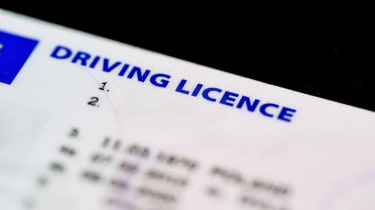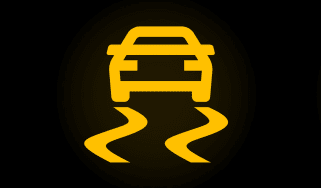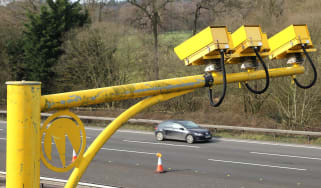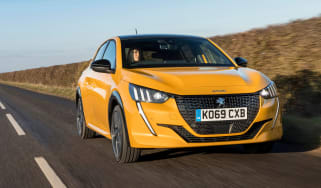Driving licence penalty points explained
We cover the ins and outs of driving licence penalty points, including why they’re issued and how long they last

If you’re caught breaking traffic laws on the road in the UK, it’s likely you’ll end up receiving penalty points on your driving licence. They’re issued when you commit certain driving offences, from speeding to using a mobile phone while driving, and can be accompanied by a fixed penalty notice or, if the offence is severe enough, a prosecution.
The number of points you receive depends on the severity of the offence, with more serious violations resulting in more points. They accumulate, too, and drivers who collect 12 or more points within three years could face disqualification from driving. The rules are even stricter for drivers who only passed their driving test within the last two years, so it's always worth being aware of how many points are on your licence at a given time.
If you’ve just been issued driving licence penalty points, you’ll probably want to know how long they stay on your record. Typically, penalty points remain on your driving licence for four years from the date of the offence, but that can be extended up to 11 years for the most serious offences.
In this guide, we'll dive into the details of driving licence penalty points, helping you understand why they’re issued, how to avoid them, and what steps to take if you find yourself with penalty points on your licence.
What do you get points on your licence for in the UK?
There are various motoring offences that can land you with penalty points on your licence. Each offence carries its own penalty guidelines with a minimum number of penalty points. You can visit the government website for more information on each offence, its code and the number of penalty points it carries. Here are a few examples of the most common driving offences:
- Speeding: three to six points
- Failing to comply with traffic signals and signs: three points
- Driving under the influence of drink or drugs: three to 11 points
- Dangerous driving: three to 11 points
- Using a vehicle with defective tyres: three points
Depending on the severity of the offence, some points will remain on your licence longer than others. Most points only last for four years before expiring, but drink and drug driving offences, as well careless driving offences that result in loss of life, will result in points that last for up to 11 years.

To find out how long the points will remain on your licence, you will need to view your driving licence information online – this is explained below.
Where are penalty points shown on my driving licence?
In the past, driving licence penalty points were recorded on the paper part of your licence.
Today, new and renewed UK driving licences are issued without the paper counterpart. All motorists with a photocard driving licence can view their driving licence record online at any time; this is where any penalty points are shown.
How do I find out how many points I have on my driving licence?
To view your driving licence information, including the number of penalty points, go to the driving licence section of the government website. To access it you’ll need the following personal details:
- Your driving licence number
- Your National Insurance number
- The postcode on your driving licence
Follow the on-screen steps to see your up-to-date driving licence information, including any penalty points currently on your licence and the time remaining until they expire. You are also given the option to share your licence information with others by creating a licence check code. This will allow anyone with the code to view your licence details for 21 days.
Those who hold a driving licence issued in Northern Ireland must visit the NI Direct site because the processes and endorsement codes are different.
How many points lead to a driving ban?
A driving ban is issued when a driver accumulates 12 driving licence penalty points within a three-year period. Some driving offences will result in an immediate disqualification. The ban can last for various amounts of time:
- Six months, if you are issued 12 or more penalty points within three years
- 12 months, if you get a second disqualification within a three-year period
- Two years, if you get a third disqualification within a three-year period
If you are disqualified from driving for 56 days or more, you must apply for a new licence before driving again. The courts will decide if you must retake your driving test or take an extended driving test before receiving your full licence again.
If you’re disqualified from driving for less than 56 days, you can’t drive until the disqualification has ended and you must check your driving licence record online for confirmation that the period is complete.
In the UK, ‘mutual recognition of disqualification’ means that if you’re banned from driving with a licence from Great Britain, you can’t drive on the Isle of Man or in Northern Ireland either. The same rules apply for disqualified drivers from NI and the Isle of Man driving in the rest of Great Britain.
New drivers who collect six or more penalty points within the two-year period after passing their test can have their driving licences revoked. If this happens, the driver will have to apply and pay for a new provisional driving licence, then pass both the theory and practical driving tests again before they can get their licence back.
How do I remove points from my UK driving licence?
Penalty points will only be removed once the period is over. For most offences this is four years after the date of the offence, but it can be up to 11 years for more serious offences. This process happens automatically.
Frequently Asked Questions
If you have accumulated 12 points on your licence within three years, you cannot legally drive. You will receive an immediate driving ban for a minimum of six months.
Read our guide to black box car insurance to find out if you can save money on your next premium…
Recommended

Classic car tax exemption: which historic vehicles qualify?
Most Popular
Tips & advice

Car dashboard warning lights: what does each symbol mean?

Electric car charging stations: public networks, charger types, apps and maps








